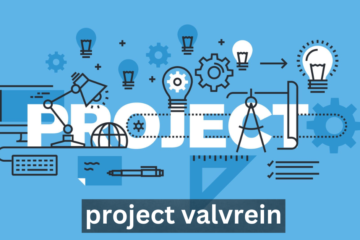Embarking on a journey with Eye Movement Desensitization and Reprocessing (EMDR) therapy can be a transformative experience, especially for those dealing with trauma or PTSD. While EMDR sessions provide crucial support and intervention, integrating self-care practices into your routine can significantly enhance and sustain the healing process. This blog explores effective self-care strategies to support your journey between EMDR therapy sessions, ensuring you maximize the benefits of your treatment and promote overall well-being.
1. Understand the Healing Process
Before diving into specific self-care practices, it’s essential to understand that healing through EMDR therapy is a gradual process. EMDR sessions work to reprocess traumatic memories and reduce their emotional charge. This work can bring up various emotions and physical sensations. Recognizing this and being patient with yourself during this time is a key component of self-care.
2. Practice Mindfulness and Grounding Techniques
Mindfulness and grounding techniques can help you stay present and manage the emotions that may arise between sessions:
- Mindfulness Meditation: Engaging in mindfulness meditation can help you stay grounded and centered. Practices like deep breathing, body scans, and focusing on the present moment can reduce stress and increase emotional resilience.
- Grounding Exercises: Techniques such as the 5-4-3-2-1 method (identifying five things you see, four things you can touch, three things you hear, two things you can smell, and one thing you can taste) can help you stay connected to the present and manage overwhelming feelings.
3. Engage in Physical Activity
Regular physical activity is a powerful tool for maintaining emotional balance and overall health:
- Exercise: Activities like walking, yoga, or swimming can help reduce stress, improve mood, and promote better sleep. Exercise releases endorphins, which can naturally enhance your mood and energy levels.
- Relaxation Techniques: Gentle exercises such as yoga or tai chi can also help with relaxation and stress reduction, complementing the therapeutic work done in EMDR sessions.
4. Maintain a Healthy Routine
Creating a structured daily routine can provide stability and support your emotional well-being:
- Healthy Eating: Consuming a balanced diet with plenty of fruits, vegetables, lean proteins, and whole grains can positively affect your mood and energy levels.
- Adequate Sleep: Prioritize getting enough restful sleep each night. Good sleep hygiene, such as maintaining a consistent sleep schedule and creating a relaxing bedtime routine, can enhance your overall mental and physical health.
5. Journal Your Thoughts and Emotions
Journaling can be a valuable tool for processing and reflecting on your experiences:
- Emotional Expression: Writing about your feelings and thoughts can help you process the emotions that arise during and between therapy sessions. It can also provide insights into patterns or triggers that you might want to discuss with your therapist.
- Tracking Progress: Keeping a journal allows you to track your progress and identify areas of growth. Reflecting on how far you’ve come can be motivating and reassuring.
6. Seek Social Support
Connecting with others can provide emotional comfort and practical support:
- Support Network: Surround yourself with supportive friends, family members, or support groups. Sharing your experiences with trusted individuals can offer validation and encouragement.
- Therapeutic Groups: Consider participating in group therapy or support groups, where you can connect with others who are experiencing similar challenges.
7. Practice Self-Compassion
Being kind and compassionate toward yourself is crucial during the healing process:
- Self-Compassion Exercises: Engage in exercises that promote self-kindness, such as speaking to yourself with the same empathy and understanding you would offer to a friend.
- Forgiveness: Allow yourself to make mistakes and understand that healing is a non-linear process. Practice self-forgiveness and recognize that it’s okay to have ups and downs.
8. Engage in Creative Outlets
Creative activities can provide emotional relief and self-expression:
- Art and Music: Engaging in creative activities such as painting, drawing, or playing a musical instrument can be therapeutic and provide a healthy outlet for expressing emotions.
- Hobbies: Pursuing hobbies and interests can bring joy and a sense of accomplishment, contributing to your overall well-being.
9. Set Realistic Goals
Setting achievable goals can help you stay motivated and focused on your healing journey:
- Short-Term Goals: Establish small, manageable goals that you can work towards between therapy sessions. Celebrate your achievements and recognize your progress.
- Long-Term Vision: Consider setting longer-term goals related to your overall well-being and personal growth. Having a vision for the future can provide direction and purpose.
10. Communicate with Your Therapist
Maintaining open communication with your EMDR therapist is vital for effective treatment:
- Share Experiences: Keep your therapist informed about any significant changes in your emotions or experiences between sessions. This information can help them tailor your treatment and provide additional support.
- Discuss Self-Care: Don’t hesitate to discuss your self-care practices with your therapist. They may offer additional recommendations or adjustments based on your needs.
Conclusion
Integrating self-care practices into your routine between EMDR therapy sessions can significantly enhance your healing journey. By focusing on mindfulness, physical activity, healthy routines, and emotional support, you can create a supportive environment that complements the therapeutic work done in sessions. Remember, healing is a collaborative process between you and your therapist, and self-care plays a crucial role in achieving lasting emotional well-being.



